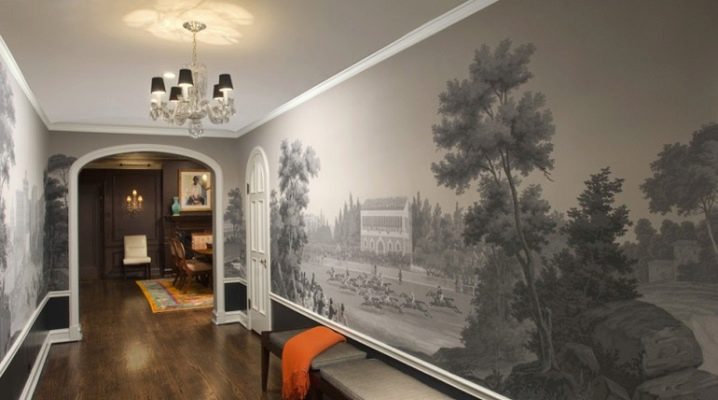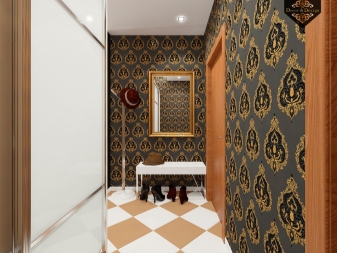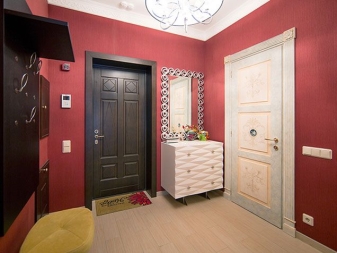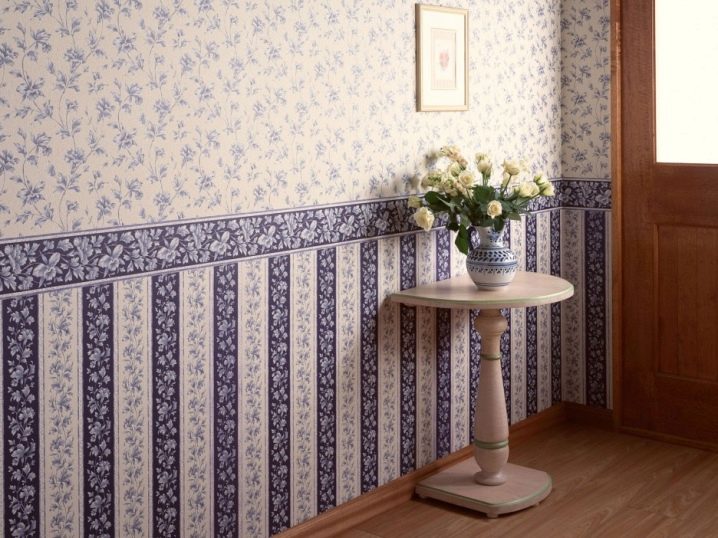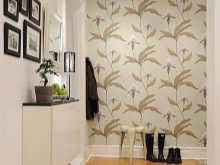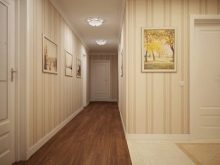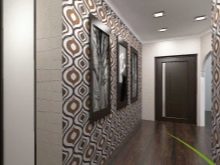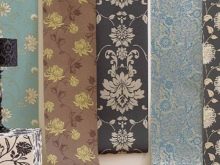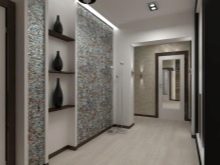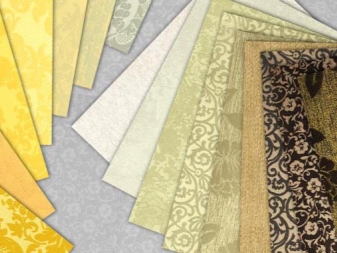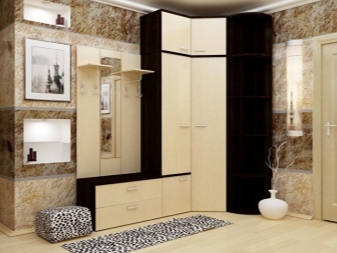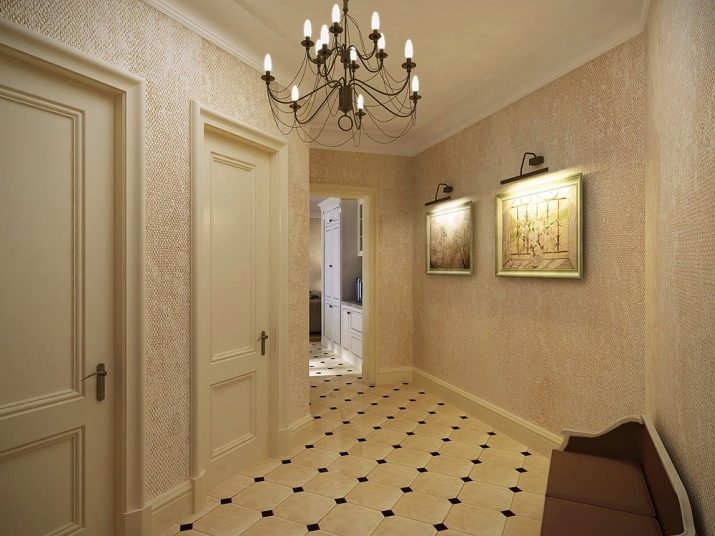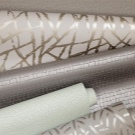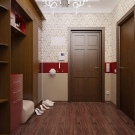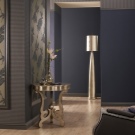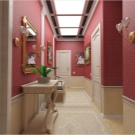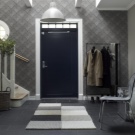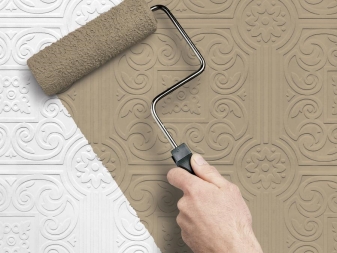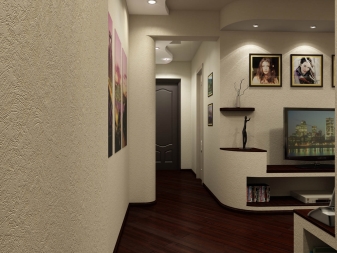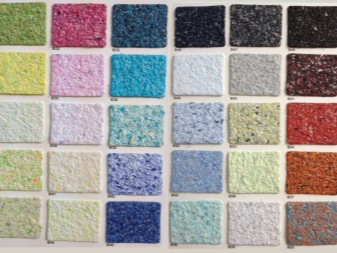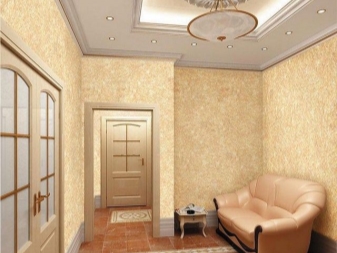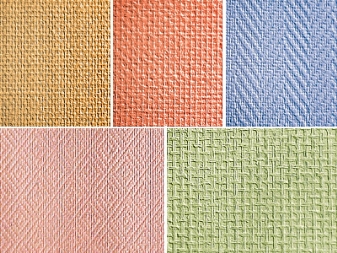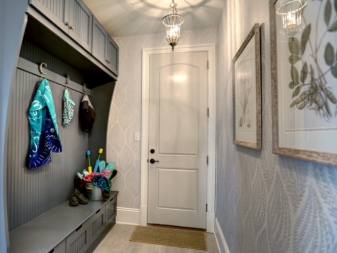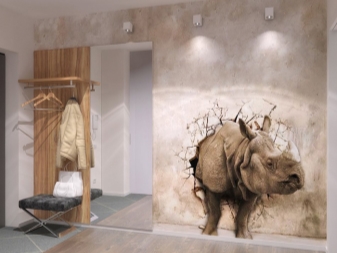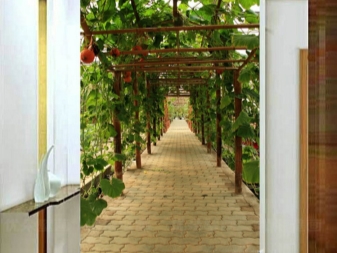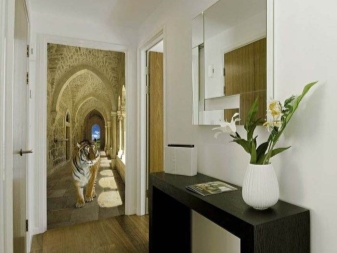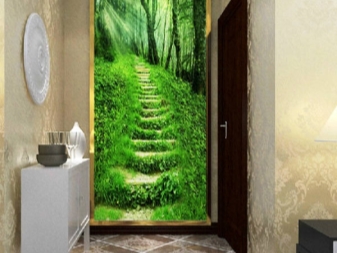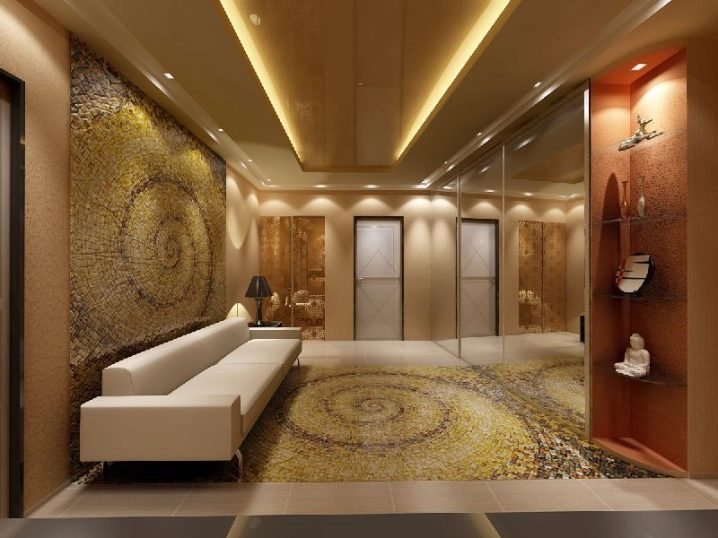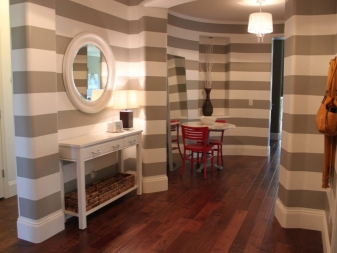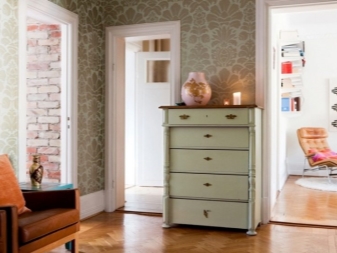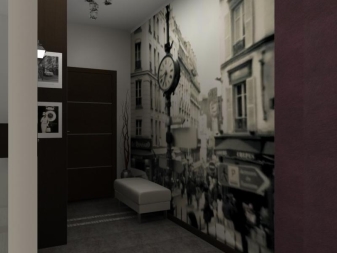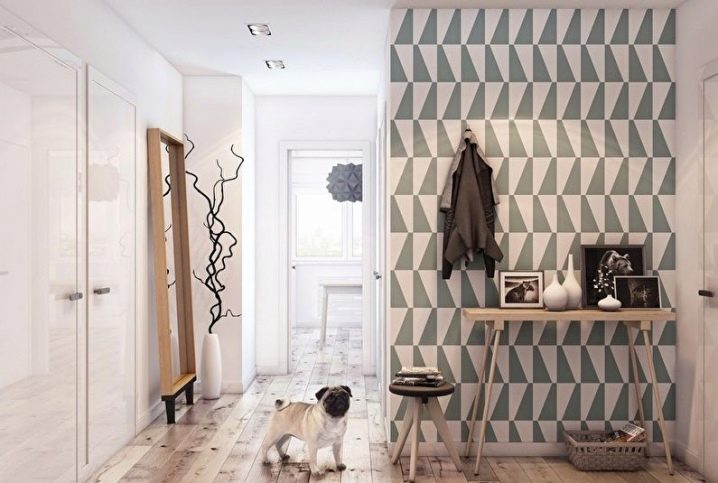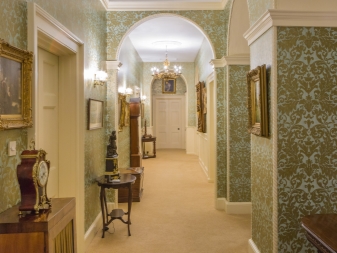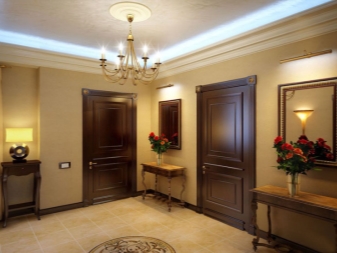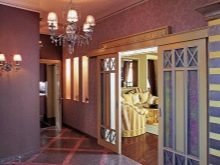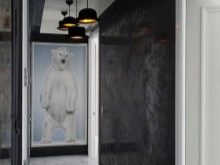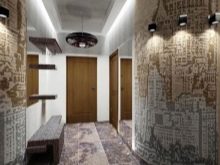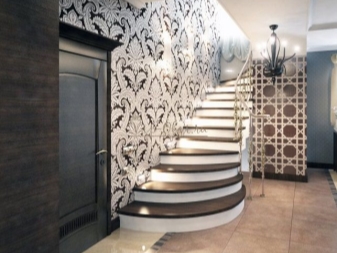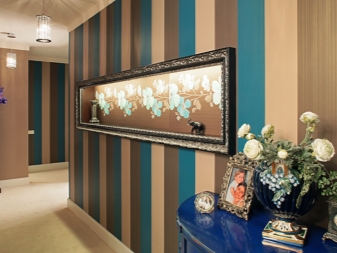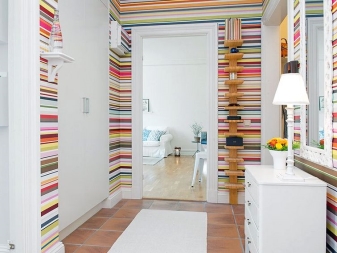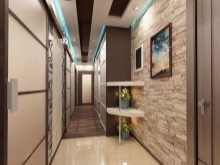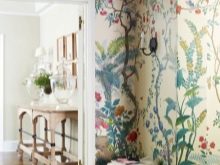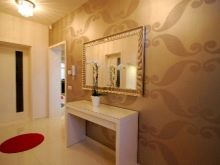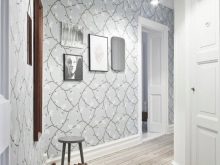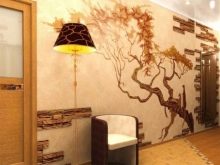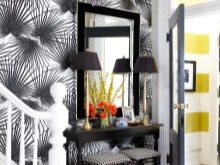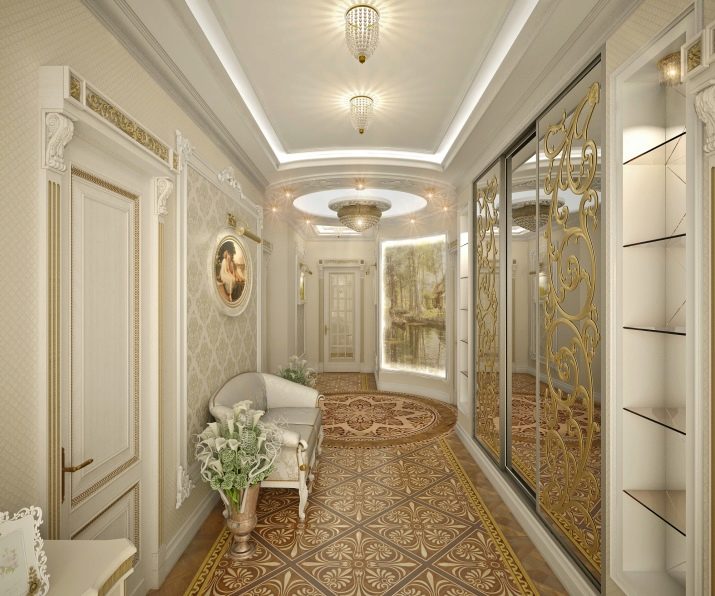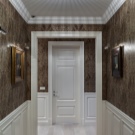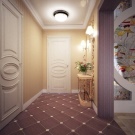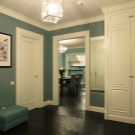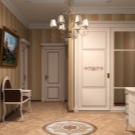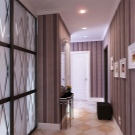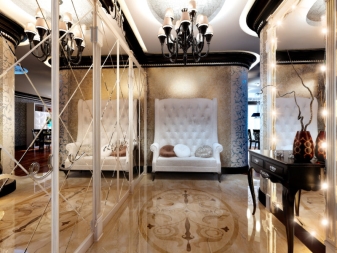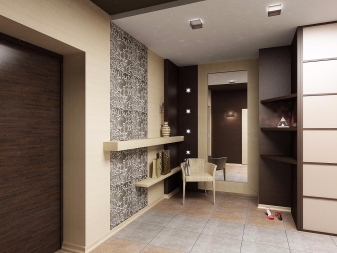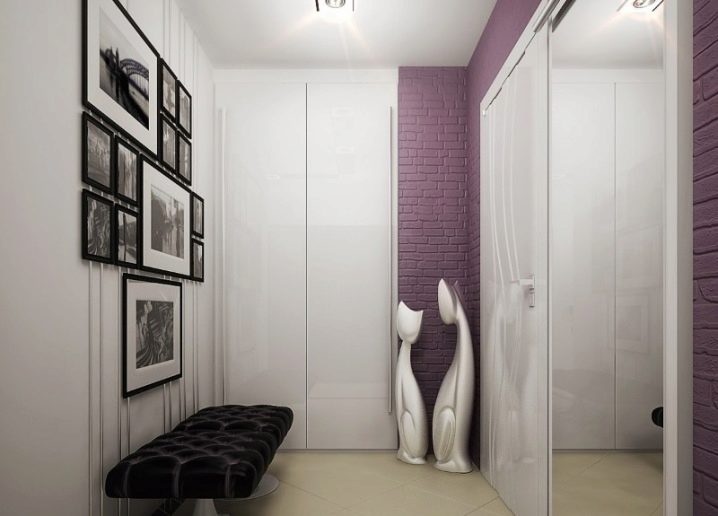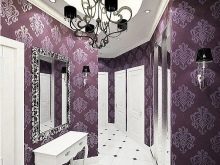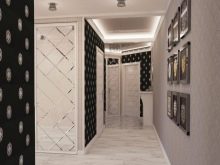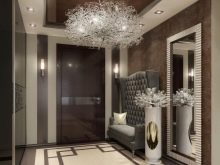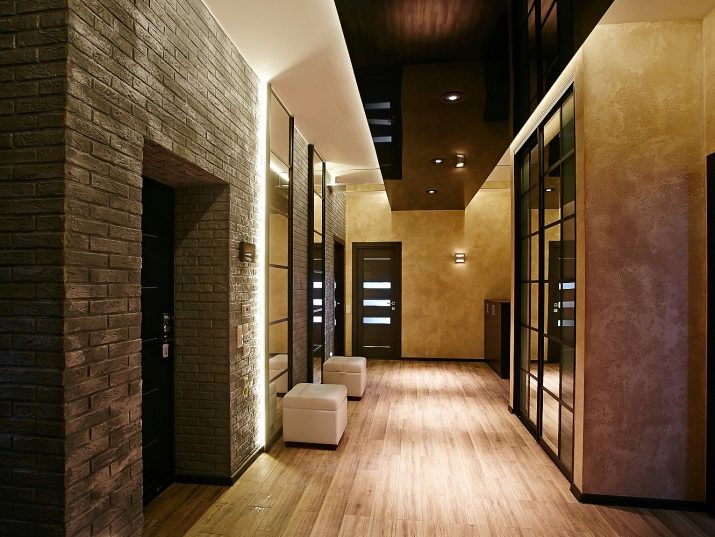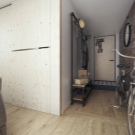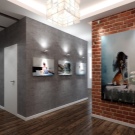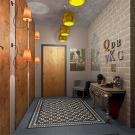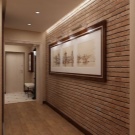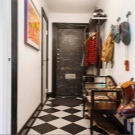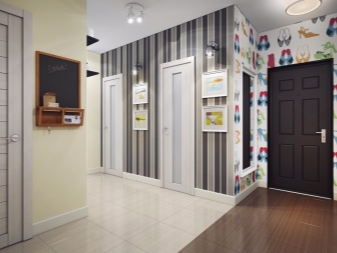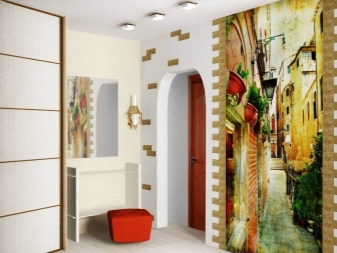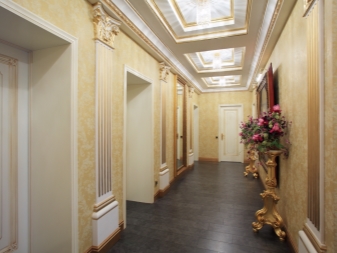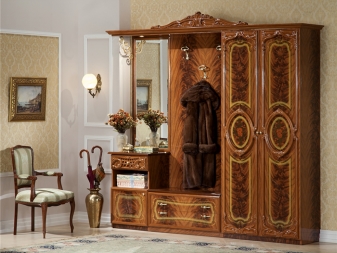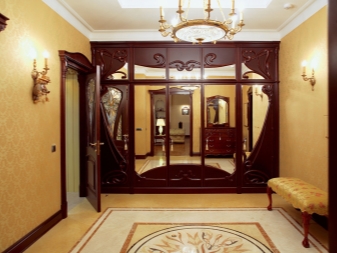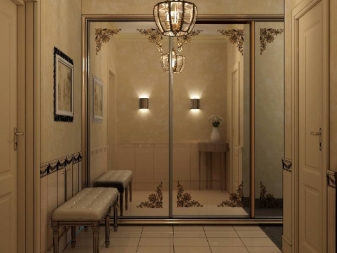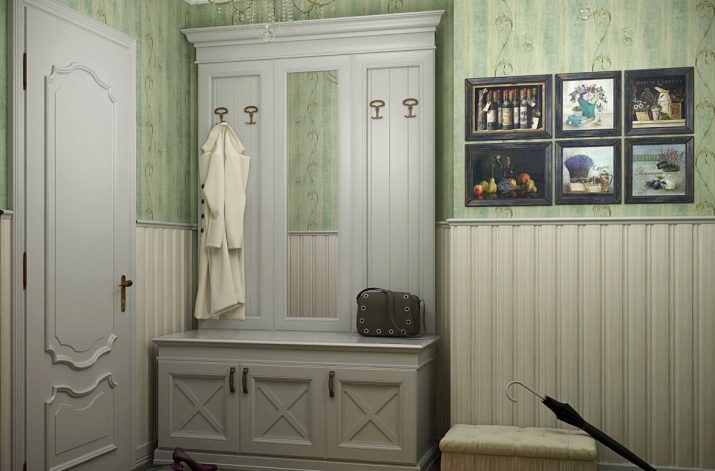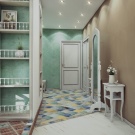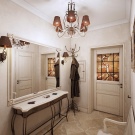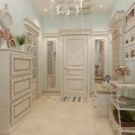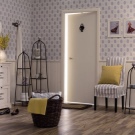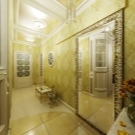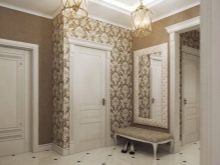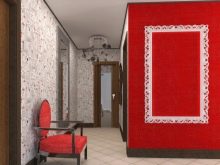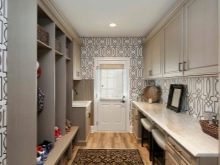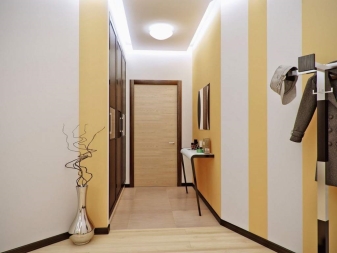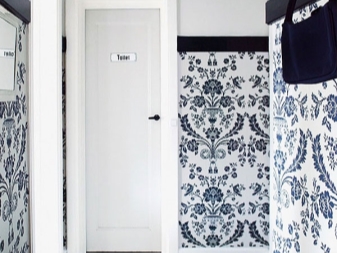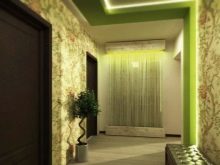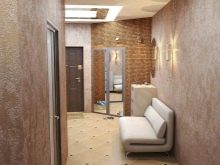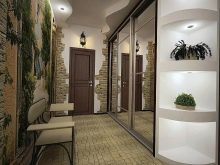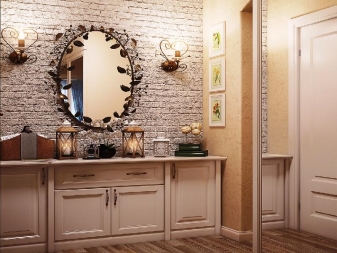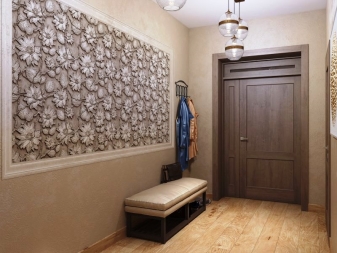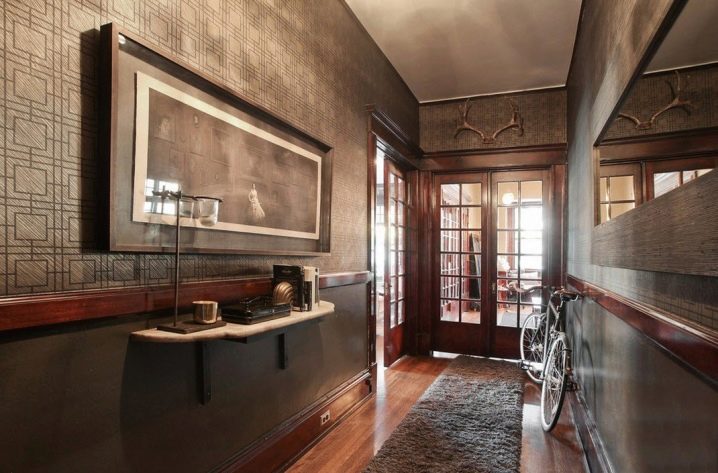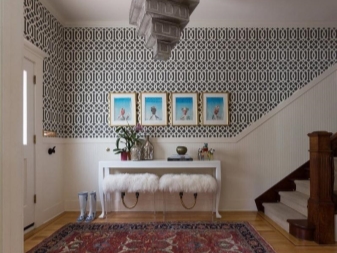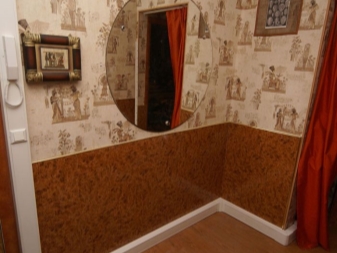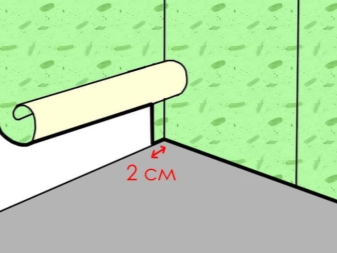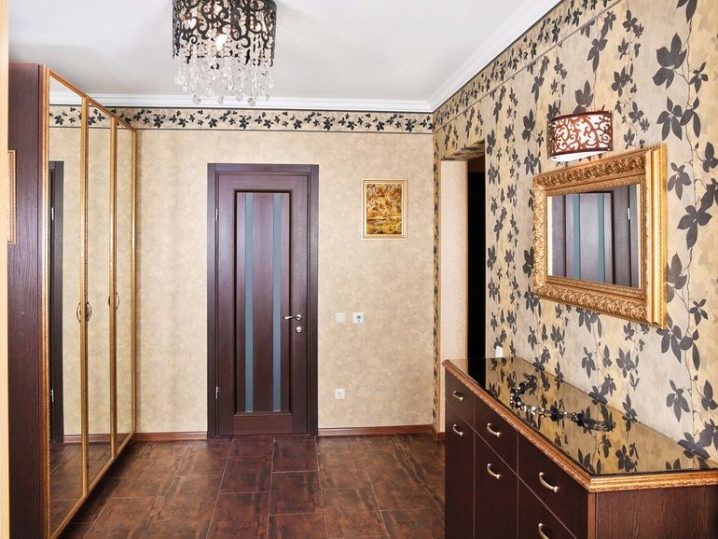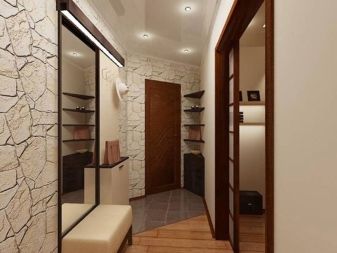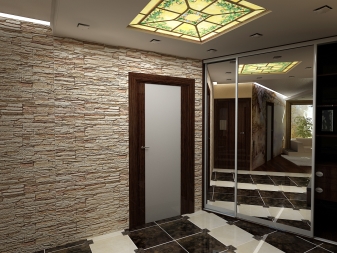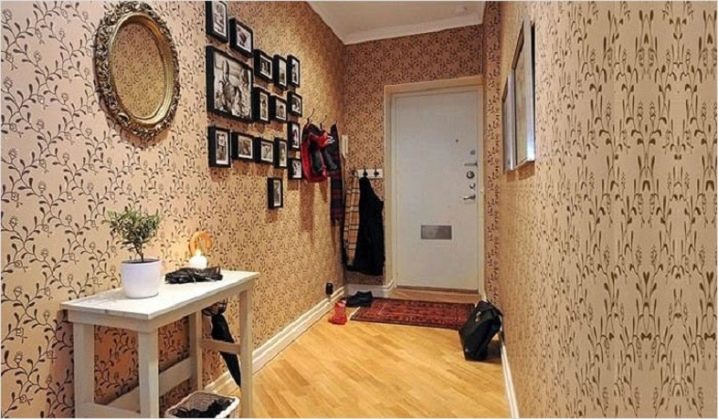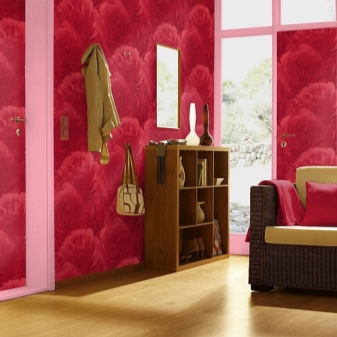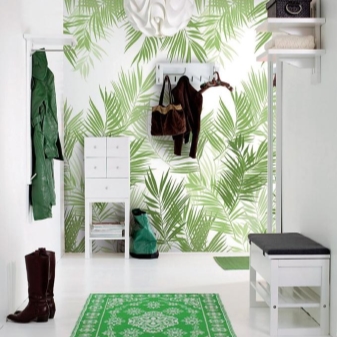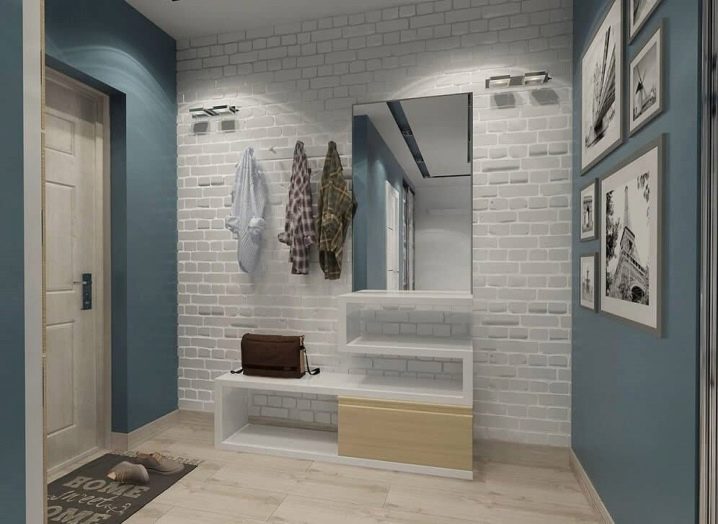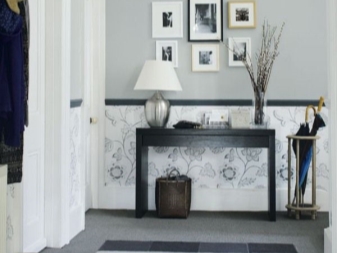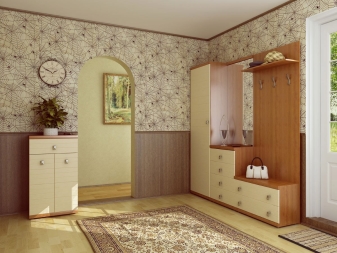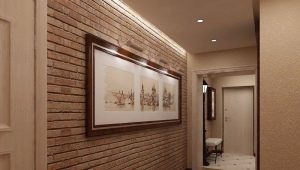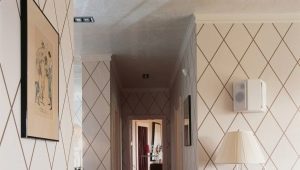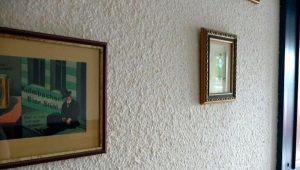Hallway wallpaper: design features
Hallway - the first room of the dwelling, which opens to the view of the incoming. By the way it is furnished and in what style it is made, you can tell a lot about the owners of the house. Wall decoration is one of the key factors of interior composition. Few people know that the choice of wallpaper for the hallway is subject to certain design features. This factor is important, as it allows to achieve maximum harmony and home comfort.
Kinds
Wallpapers - finishing building material of internal type for cladding walls and linens, which is presented on the modern construction market in the form of rolled canvases. Due to the unique modern developments with the use of special technologies, the choice of raw materials has no boundaries. Today, this finish is completely different from the analogue of the Soviet era: This design tool that sets the idea of interior composition.
The significance of the wallpaper is comparable to the lighting of the hallway, which is able to beat any interior, filling the room with light. All types of wallpaper for the hallway can be divided into several varieties, among which the main ones are listed below.
Each type has strengths and weaknesses, although if you wish, you can choose a worthy option for finishing the hallway in any of them.
Paper
Paper types are smooth or structural paper sheets of different widths with an image or photo printing applied to the front side. Depending on the category, they can be single-layer (simplex) or double-layer (duplex), while single-layer ones are less durable and cost-effective, double-layer ones are more attractive and can decorate the surface of the hallway walls for 5 years without the need for plywood.
Vinyl
Vinyl wallpapers have a porous surface and consist of two layers: the upper vinyl and the lower base, which is a substrate of paper or non-woven fabric, covered with a film of PVC. The material belongs to the class of luxury finishes, although it is poorly breathable and can emit formaldehyde vapors over time.Vinyl wallpapers are divided into several varieties: silk-screen printing, smooth, solid and foamed. Drawing is made by stamping, outwardly quite often reminds textiles.
Textile
Textile wallpaper wallpapers are decorative fabric or individual threads arranged parallel to each other and glued to a paper base. This finish is a sign of good taste and well-being of the owners of the house, although in the care and maintenance of such material is quite capricious, it requires special pasting skills. In order to eliminate the glue on the front side, you have to put it on the wall.Fortunately, the non-woven substrate provides for this.
Flizelinovye
Flizelinovy finish differs in a dense polymeric substrate from paper or textile fibers. This material is perfectly breathable, easy to use, fireproof, does not fade if the hallway is lit in the proper volume and if necessary able to hide minor irregularities of the walls. The disadvantage of this wallpaper is the accumulation of dust on the surface, in addition, it Coverage requires careful handling.
For painting
Varieties for painting - a great option for wall coverings of the hallway.If necessary, they can be repainted in any color. They are unpretentious in the preparation of walls, are waterproof material and imply multiple staining of the surface, uniformly filling each area of the textured surface with fresh paint.
Liquid
Liquid wallpaper is a peculiar way to bring a new idea into the room by sticking individual pieces of material, which is kneaded according to the principle of wallpaper glue and allowed to stand for the indicated time. In fact, it is a material that is applied to the wall without joints, smeared on the surface of the wall and, if desired, perform any pattern. Wallpapers dry for a very long time and suffer from water. This view is not roll.
To learn how to create a picture with liquid wallpaper, see the following video.
Glass fiber
Glass fiber - an original reception design of the hallway. This is a fiberglass wall decorative coating, which is made by the weaving method. The material is knitted from glass yarns, giving a stable shape by means of special impregnations. It includes a matting, which is capable of reinforcing walls, masking even cracks on them. Data wallpaper non-toxic, resistant to rotting, differ in the acceptable price.
3D
The 3D wall covering includes wallpapers that are applied to a digital image that distorts space and creates a three-dimensional volume effect. Such canvases are quite expensive, easy to use, resistant to mechanical damage, fireproof. Their only drawback is that they quickly get bored and for the right effect you need a long distance.
In addition to the main types, there are other design techniques. Trademarks offer to the attention of creative buyers rare and exclusive materials, among which velor, linen, bamboo, metallized, cork, jute, fluorescent, luminous wallpapers and superwash stand out especially, but not all of these varieties are practical in the hallway and are suitable for its design.
Some of them can disrupt the lighting composition, others can change the structure of the surface with every touch.
Functionality
If before the wallpaper was intended solely for decorating walls, modern approach to interior design makes them a functional tool:
- Depending on the color and pattern, they give the room a sense of space, creating the illusion of space and saving the room from a lack of space;
- They are an accent spot of the interior composition or a connecting link of different furnishings in style, but identical in color;
- They mask small irregularities of the wall by means of different textures;
- Bring in the interior of the room a special atmosphere, creating the necessary aesthetic perception and mood;
- Diverting attention from other areas of the room, especially if their organization is far from ideal;
- Able to create a unique composition with additions in the form of flooring, interior elements in one style or pattern;
- When properly positioned, they contribute to the organization of the space, clearly dividing the hallway into zones.
Benefits
Wallpapers for the hallway have a lot of advantages:
- They are made of various eco-friendly materials, therefore they are safe for health;
- Most products are characterized by high air permeability, which excludes the appearance of an environment for fungus and mold below or on the surface;
- They have a wide range of thematic drawings, thanks to which they provide support for any stylistics of the interior;
- They have a rich color palette, which makes it possible to decorate the walls of the hallway with paintings of noble shades, indicating the status of the owners of the house;
- Increase the design possibilities of any hallway, even small-sized;
- Depending on the type of raw materials used and the thickness of the canvas, they provide sound insulation to the hallway;
- Almost always attractive in appearance, have a different texture of the surface, which allows you to successfully enter into the interior objects with a similar texture;
- Provide a different way of pasting walls, so that everyone will find the most simple and convenient method to achieve a perfect result;
- Depending on the model, they are resistant to sunlight and moisture;
- It has a different width, which simplifies the pasting of walls and allows you to combine canvases in a similar style as harmoniously as possible (paired wallpapers);
- Almost always simple and convenient in pasting the surface of the walls;
- Certain models include painting the surface;
- Depending on the price of the components, the complexity of the pattern and the additional effect, they differ in cost, which allows each customer to choose the best option, taking into account their preferences and the planned budget.
Minuses
Despite the large list of advantages, the wallpaper has several drawbacks:
- Cheap species look dull and often spoil the overall look of the setting;
- They are not always combined with each other according to the invoice (it is necessary to strictly observe the pairings of the partners);
- For varieties with a minimum thickness, it is required to level the walls, as any irregularities are visible under them;
- Not always washable;
- Depending on the type of dye sometimes change color;
- In low-cost versions, a short service life, surface damage are formed by random mechanical effects;
- There is no maintenance behind the surface.
Texture
The surface of the wallpaper for the hallway is diverse and depends on taste preferences, as well as furnishings. In addition, this factor is determined by the canvases themselves, differing in thickness and variety of texture. Depending on this, it may be as follows:
- Glossy;
- Matte;
- Smooth;
- Rough;
- Silky;
- Porous;
- Plush;
- Soft;
- Solid.
Colors
The color design of the entrance hall with wallpaper is different and depends on the taste of each. Some prefer practicality,therefore, shades of wall coverings are more often dark, muted and non-marking.
Another important effect, so they choose bright contrasts and bright accents. In the first group of tones that are most relevant in the interior of the hallway are brown, purple, burgundy, green, orange and red paint. The calm range includes white, yellow, beige, lilac, blue and turquoise. In addition, relevant gray-pink and mint tones. Black and gray paint boredom, so in the interior of the hallway, they are inappropriate.
Excessive color pressure should be avoided: any shade should be subdued, soft.
Fashion drawings
The theme of the wallpaper patterns in the hallway is multifaceted and allows you to transfer everything that is conceived by the design. Conventionally, the pictures can be classified into several categories:
- Classic prints (stripes, cells, waves, zigzags);
- Geometric shapes (squares, circles, rings, diamonds);
- Imitation of natural materials (pebbles, murals, tiled masonry, natural leather, ceramic tile, marble chips, boards, parquet, laminate);
- Floral motifs (roses, peonies, sunflowers, chamomiles, lilies and other floral patterns);
- Monograms (monograms framed in lace curls, often composing a pattern on striped bases);
- Vegetable lace (openwork interlacing of branches with small leaves and barely opened flower buds, a grid-honeycomb of climbing plants, curls over the entire area of the canvas);
- Ethnic ornaments (Egyptian, African, Norwegian patterns);
- Abstraction (divorces, bright spots, not subject to any systematics, single accents on a plain background).
Separate rulers are canvases with a single-colored face, imitating aged, cracked surface, slight chaos in the form of stains and undyed walls. Such a technique requires the correct choice of shade: it must resemble a natural material (stone, board, cloth).
In this case, the styling will look appropriate and with the right support through the details of the situation will create the desired effect.
Styles
Due to the wide range of products offered, wallpaper for the hallway can become a component of any style decision interior composition. They fit most harmoniously into the following styles:
- Classic;
- Modern;
- Minimalism;
- Art Deco;
- Loft;
- Avant-garde;
- Baroque;
- Vintage;
- Neoclassical;
- Provence.
The guidelines for the choice of paintings are shades, themes, color support, medium-sized drawings, moderation of surface filling. To make the style more pronounced, one bright accent or a wall with an inconspicuous coloring is enough. This is enough to indicate the idea of style and not to disturb the harmony of design.
How best to choose a wallpaper for the walls?
Buying wallpaper is a creative lesson, but often the project provides one, and the store has something completely different. In order not to abandon the conceived idea of design, it is worth considering some points:
- To choose wallpaper according to the color of the floor covering is an error that reduces the height of the walls: if you want harmony, it is enough to buy paintings with a touch of pattern in a similar tone (for example, with furniture, laminate, tile, linoleum);
- Dark color is undesirable: it visually hides the area of any room;
- Hallway - a place where the level of pollution is high, so you should give preference to practical shades or tricky texture, through which you can hide spots or other dirt;
- For a large hallway or studio apartment, bright colors and large prints are suitable, in a small room of 7 square meters. m is better to buy paintings with small patterns.
In the long room it is better to pick up paired wallpapers, decorating with a bright accent of the distinction.
Stylish combination options
Combining the wallpaper is an original reception for the design of the hallway walls, which has no restrictions and welcomes any experiments:
- Horizontal reception. The location of the wallpaper horizontally in the form of alternating different rolls (initially draw a line parallel to the floor);
- Vertical combination. Similar to the horizontal reception of alternation, allowing a combination of canvases of the same and different width (it is possible to make monochrome wide, contrast can be less);
- Reception of connection of two close shades of one invoice. The use of shades for a soft contrast and a relaxing atmosphere with the release of one or two walls;
- Monophonic and with drawing. Acceptance of decorating different walls or highlighting the accent in the middle, framing it on the sides with plain wallpaper (can occupy half of the wall or a small area around the mirror);
- Receiving a mix of simple canvases and photo wallpapers.Accentuation of one wall, pasting other monotonous companion;
- Highlight accent zone. Zoning hangers, mirrors, dressing room, helping to clearly delimit the room (creating the effect of the organization of space);
- Combination-flaps. Cutting the wallpaper into squares or rectangles, followed by sticking to the wall in any, even chaotic order (a kind of patchwork on the wall);
- Inserts-panels. Separate inserts-stickers on a monophonic basis with the subsequent framing of the panel into the frame from a decorative plinth or baguette (imitation of paintings, decoration of panels);
- Emphasizing niches and protrusions of walls. The use of different in color and pattern panels, purposely distinguishing protrusions (often accent them with small prints of photo wallpaper).
The main rule of a successful combination is the use of wallpaper of the same thickness, width, engaging in the design of no more than two ornaments.
It is important that the bright tones of the palette are combined with the neutral ones, and they look good together. Combining different canvases, you need to look at the batch number: this will avoid different shades where it is not needed.Artificial lighting distorts the real colors of the wallpaper, at home they may look very different and not fit together.
How to combine with panels?
The combination of different materials allows you to achieve an amazing effect. This technique is inappropriate in the style of minimalism, but harmonious with a classic design, emphasizing the styling of the room. The combination rules are simple:
- In the case of horizontal or vertical alternation, dense vinyl, non-woven fabrics with relief (smooth and thin are irrelevant) are used, while adding borders, friezes or moldings;
- Reception of inserts involves the preparation of the wall, then it must be plastered or sheathed, after which the finish is mounted (wallpaper cuts framed with moldings or thin slats);
- It is possible to paste over one wall with wall-paper, another to sheathe the panels, giving the integrity of the composition by means of borders;
- Wallpapers can be glued onto plastic panels, for which plastic should be pre-primed in two layers (the pattern can be chaotic, in a staggered manner or as a single accent), decorating the pattern with frames for greater effect.
Where do you start to glue?
Wallpapering in the hallway starts from the door, then in a circle and ending with the door. At the same time, the type of wallpaper is important: thin sheets are glued with overlapping, dense and textured butt. If the cloth has a print, it is important to monitor the coincidence of the pattern. For convenience, manufacturers indicate the rules of sticking on each roll.
So that over time in the corners there is no warping of the panels, you can cut the wallpaper at the transition to another wall, then make the minimum entry of the canvas. If the wallpaper is thick or accented a little, you can start sticking to any corner.
Original interior design ideas
To understand how best to decorate the entrance hall with wallpaper, you can look at examples of experienced designers.
In the spacious hallway appropriate wallpaper paired with a beige background and gray leaves. Layout is better to create through the curb.
For a narrow corridor, beautiful wallpapers for natural stone and a single-color companion in the same shade will fit. Due to a simple pattern, they "stretch" the space.
No less harmoniously in the long corridor of "Khrushchev" powdery wallpaper with a simple vegetable print will look.Small lace with curls will make the room more spacious, and the mirror and paintings will distract attention from the lack of space.
For a private country house with a spacious hallway are relevant bright wallpaper with a large pattern. They will decorate the bright room, filling it with bright accents.
The design of the hallway with an arch can be made with the use of wallpaper in the form of brickwork, while highlighting the doorway in white.
If the area allows, you can perform a horizontal combination, making the original wallpaper panels with a stylish floral pattern in neutral colors.
